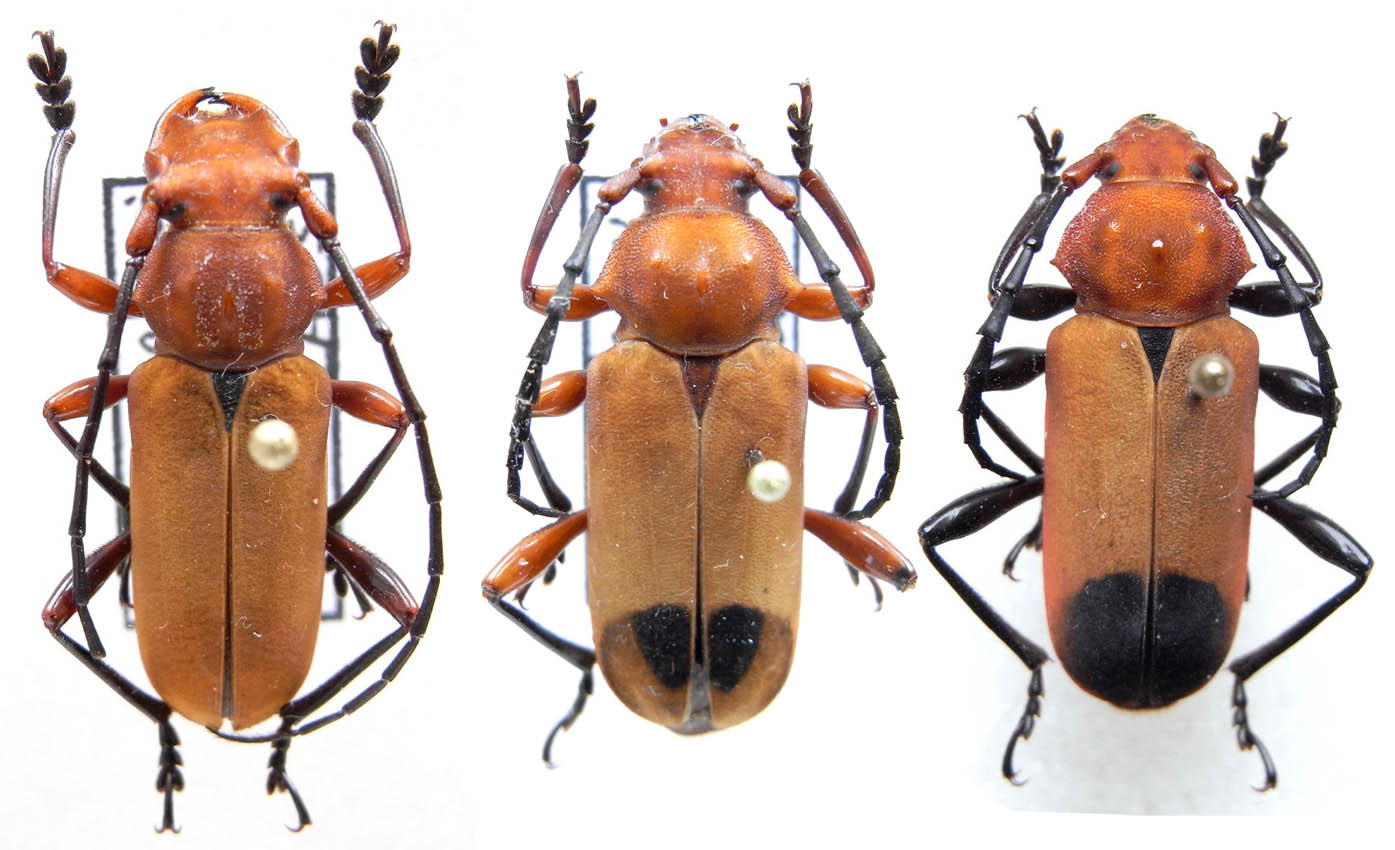| Author |
 Topic Topic  |
|
|
cholerik007
Member Purpuricenus
 
Czech Republic
106 Posts |
 Posted - 21/12/2021 : 17:10:06 Posted - 21/12/2021 : 17:10:06



|

103.23 KB
Anyone id please?
Mt. Phu Phan, Laos
|
Edited by - Xavier on 21/12/2021 18:40:59 |
|
|
Xavier
Scientific Collaborator
    
France
12338 Posts |
 Posted - 21/12/2021 : 18:40:28 Posted - 21/12/2021 : 18:40:28



|
| Euryphagus lundii (Fabricius, 1792) male |
 |
|
|
cholerik007
Member Purpuricenus
 
Czech Republic
106 Posts |
 Posted - 22/12/2021 : 12:09:04 Posted - 22/12/2021 : 12:09:04



|
| So E.lundi could have black spots on elytrae as well? I have similar male of E.lundii but without any spots... |
 |
|
|
Xavier
Scientific Collaborator
    
France
12338 Posts |
 Posted - 22/12/2021 : 12:33:09 Posted - 22/12/2021 : 12:33:09



|

159.18 KB
Here 3 specimens collected in Laos (male & 2 females); even the colour of legs is variable. |
 |
|
|
Pierre
Member Rosenbergia
   
Switzerland
1769 Posts |
 Posted - 22/12/2021 : 13:01:33 Posted - 22/12/2021 : 13:01:33



|
The black area on the elytra can vary a lot in all Euryphagus items. Both lundii (Fabr.) and maxillosus (Olivier) may show an apex totally red, or completely black, with all possible intermediate stages
By the way, the colour of the legs also tends to vary. It seems that the most stable colour character is the pronotal disc: red in lundii, with a large black spot in maxillosus. |
 |
|
|
Xavier
Scientific Collaborator
    
France
12338 Posts |
 Posted - 22/12/2021 : 14:03:15 Posted - 22/12/2021 : 14:03:15



|
| Euryphagus maxillosus (Olivier) is a species from Philippines, which do not occur in Laos; but Euryphagus miniatus (Fairmaire, 1904), from Laos too, has a black spot on elytra, not touching the apex. |
 |
|
| |
 Topic Topic  |
|


